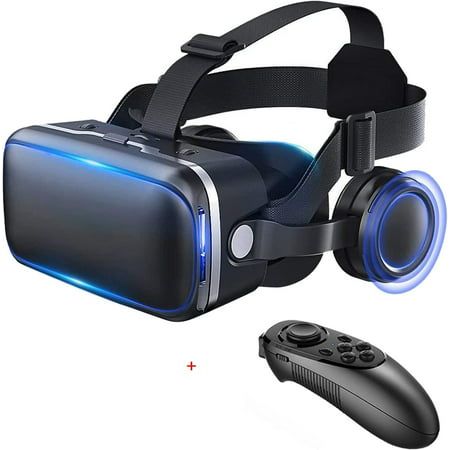The world of virtual reality (VR) has exploded in recent years, offering immersive experiences that transport us to new dimensions. At the heart of this technological revolution are VR headsets, the gateway to extraordinary realms and interactive adventures. In this comprehensive guide, we’ll take a deep dive into VR headsets, exploring their types, features, applications, and how to choose the perfect one for your VR journey.
Types of VR Headsets:
Before we explore the world of VR headsets, let’s understand the two primary categories:
- Tethered VR Headsets:
- Description: Tethered headsets are connected to a powerful gaming PC or console, offering high-quality graphics and tracking.
- Examples: Oculus Rift, HTC Vive, Valve Index.
- Standalone VR Headsets:
- Description: Standalone headsets have built-in computing power, eliminating the need for external devices. They offer portability and convenience.
- Examples: Oculus Quest 2, Pico Neo 2, HTC Vive Focus.
Key Features to Consider:
- Display Resolution:
- Description: Higher resolution means sharper and more immersive visuals. Look for headsets with at least 1440×1600 pixels per eye for a clear experience.
- Field of View (FOV):
- Description: FOV determines how much of the virtual world you can see. A wider FOV enhances immersion.
- Recommended: 100 degrees or higher.
- Tracking System:
- Description: Tracking technology determines how accurately your head and hand movements are replicated in the virtual world.
- Options: 3 Degrees of Freedom (3DOF) or 6 Degrees of Freedom (6DOF).
- Refresh Rate:
- Description: A higher refresh rate results in smoother and more comfortable VR experiences.
- Recommended: 90Hz or higher.
- Comfort and Ergonomics:
- Description: A comfortable fit, adjustable head straps, and balanced weight distribution are crucial for long VR sessions.
Applications of VR Headsets:
- Gaming: VR gaming offers unparalleled immersion, allowing you to step into the worlds of your favorite games.
- Education: VR is used for educational purposes, providing students with interactive learning experiences.
- Training: Industries like aviation and healthcare use VR for realistic training simulations.
- Entertainment: VR headsets offer immersive 360-degree videos and virtual tours.
- Therapy and Rehabilitation: VR is used in therapy for phobias, PTSD, and physical rehabilitation.
Choosing the Perfect VR Headset:
- Consider Your Budget: VR headsets range from budget-friendly to high-end. Set a budget before exploring options.
- Determine Your Use Case: Are you primarily interested in gaming, education, or other applications? Choose a headset that suits your intended use.
- Check Compatibility: Ensure the headset is compatible with your PC or gaming console if you’re going for a tethered option.
- Try Before You Buy: If possible, try out different headsets to see which one feels the most comfortable and immersive.
Conclusion:
VR headsets have opened the door to limitless possibilities in gaming, education, training, and entertainment. With the right headset, you can embark on incredible journeys and experience the impossible. By understanding the types, features, and applications of VR headsets, you can make an informed decision and immerse yourself in the fascinating world of virtual reality. So, take that leap, put on your VR headset, and dive into a new dimension!

